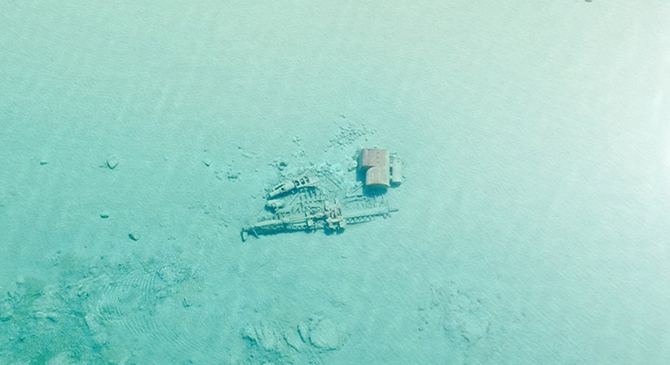Only a few weeks ago, on April 17, a Coast Guard aircrew was doing a routine patrol along the Lake Michigan shoreline when they made this amazing discovery. The lake’s water is so clear right now as ice is gone for the season, giving the aircrew the amazing opportunity to snap photos of the many shipwrecks revealed in the lake’s crystal clear waters.
From the sky, at a freezing average of 38 degrees, the aircrew as able to spot and identified some of the lake’s 1,500 sunken hulls.
Among them is the James McBride. This 121 foot brig ran aground during a storm on October 19, 1857. Her remains lie 5 to 15 of water near Sleeping Bear Point.
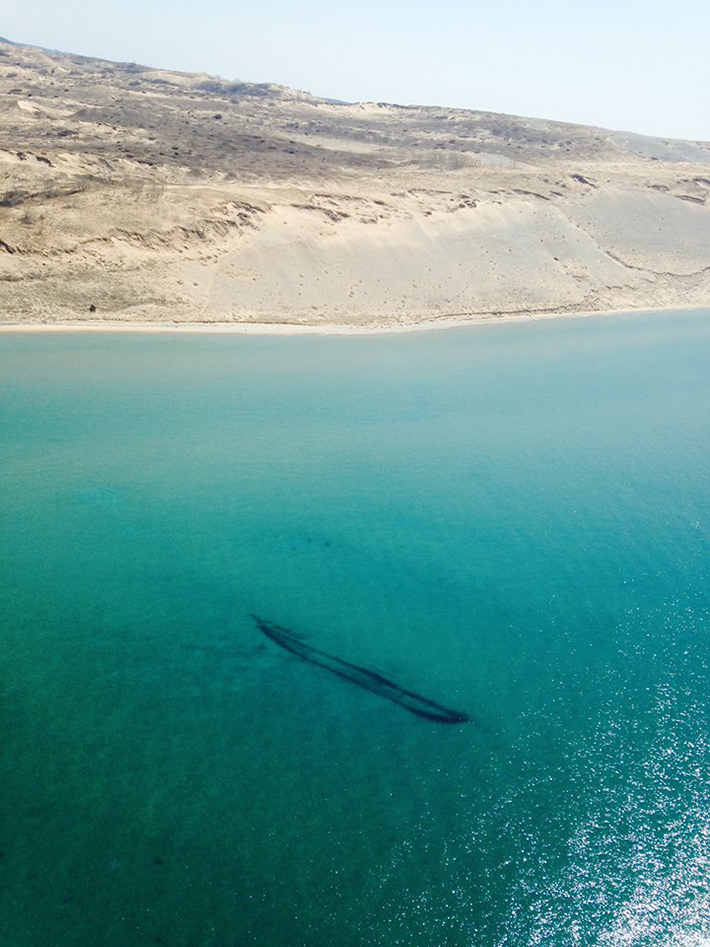
Facebook / U.S. Coast Guard Air Station Traverse City
According to the Coast Guard, McBride journeyed to the Manitou Islands in mid-October of 1857 where she took on a cargo of wood. On October 19, on her return trip to Chicago, she encountered a gale and was driven ashore near Sleeping Bear Dune.
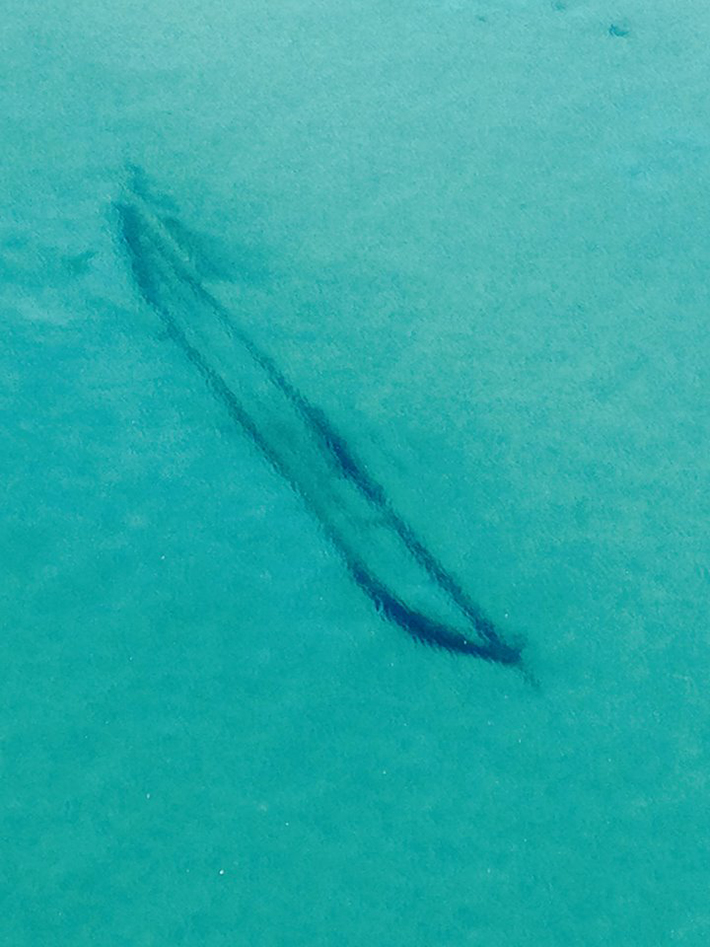
Facebook / U.S. Coast Guard Air Station Traverse City
The Rising Sun. This 133 foot long wooden streamer was stranded north of Pyramid Point on October 29, 1917. Her wreckage now rests in 6 to 12 feet of water.
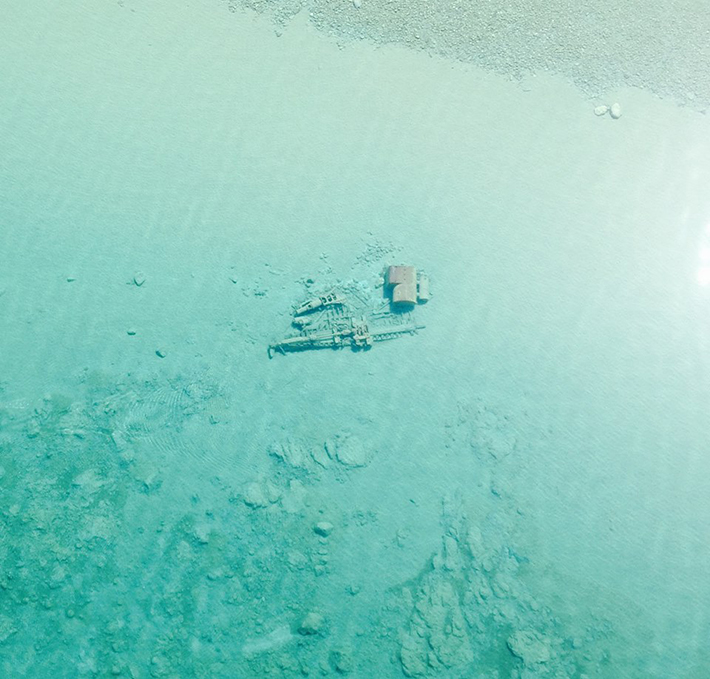
Facebook / U.S. Coast Guard Air Station Traverse City
An unknown wreck captured by the US Coast Guard from a helicopter during a routine patrol.
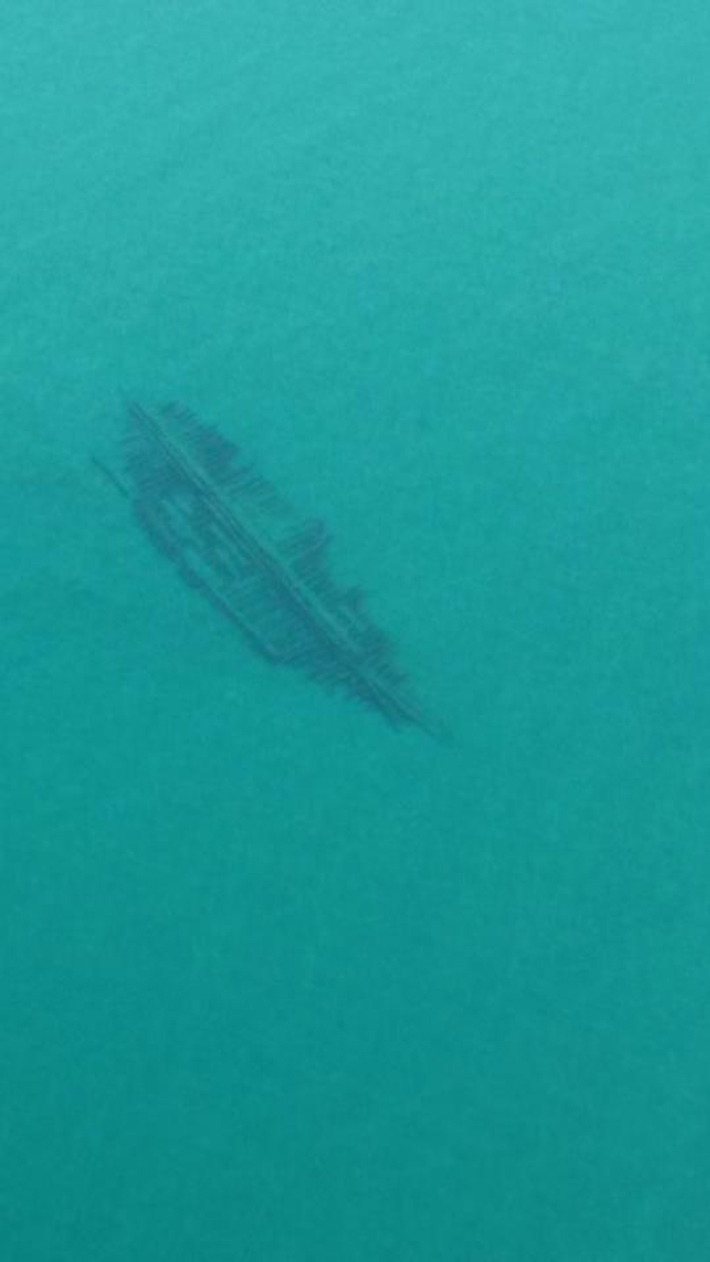
Facebook / U.S. Coast Guard Air Station Traverse City
The lake’s clear waters reveal two more shipwrecks.

Facebook / U.S. Coast Guard Air Station Traverse City
The unpredictable weather makes Lake Michigan home to some of the most dangerous waters in the world where many ships foundered in the 19th and early 20th centuries.
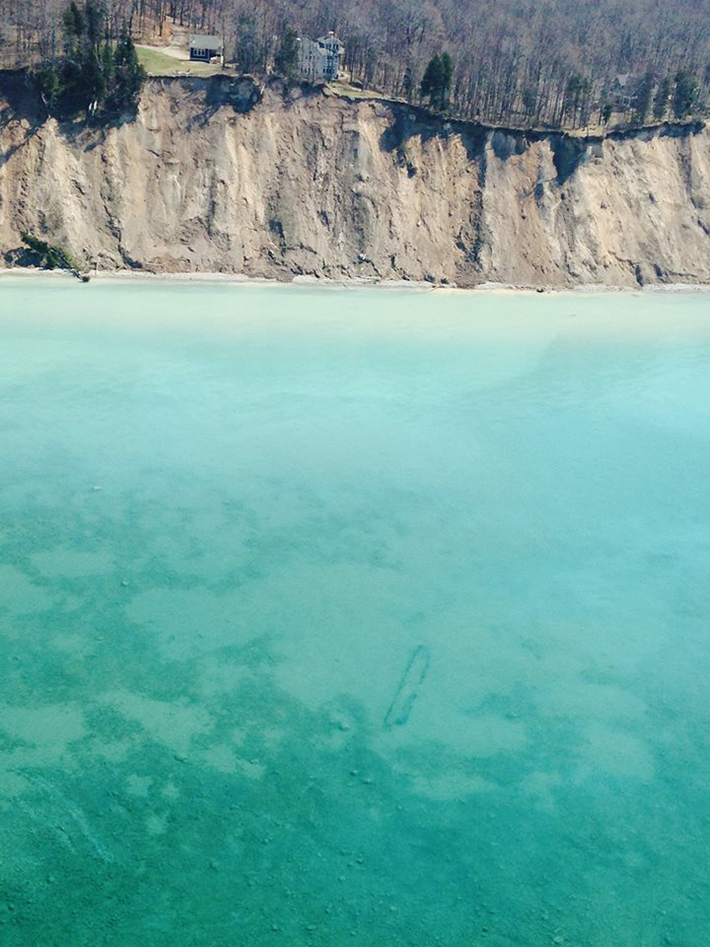
Facebook / U.S. Coast Guard Air Station Traverse City
The normally obscured wreckage are now exposed due to the water’s unusual transparency which was caused by surface ice melting, waves, wind, and beach erosion. It’s truly incredible that the aircrew was able to take these photos before plankton and other organisms conceal the boat graveyard once again.
H/t Facebook / U.S. Coast Guard Air Station Traverse City │ Daily Mail

